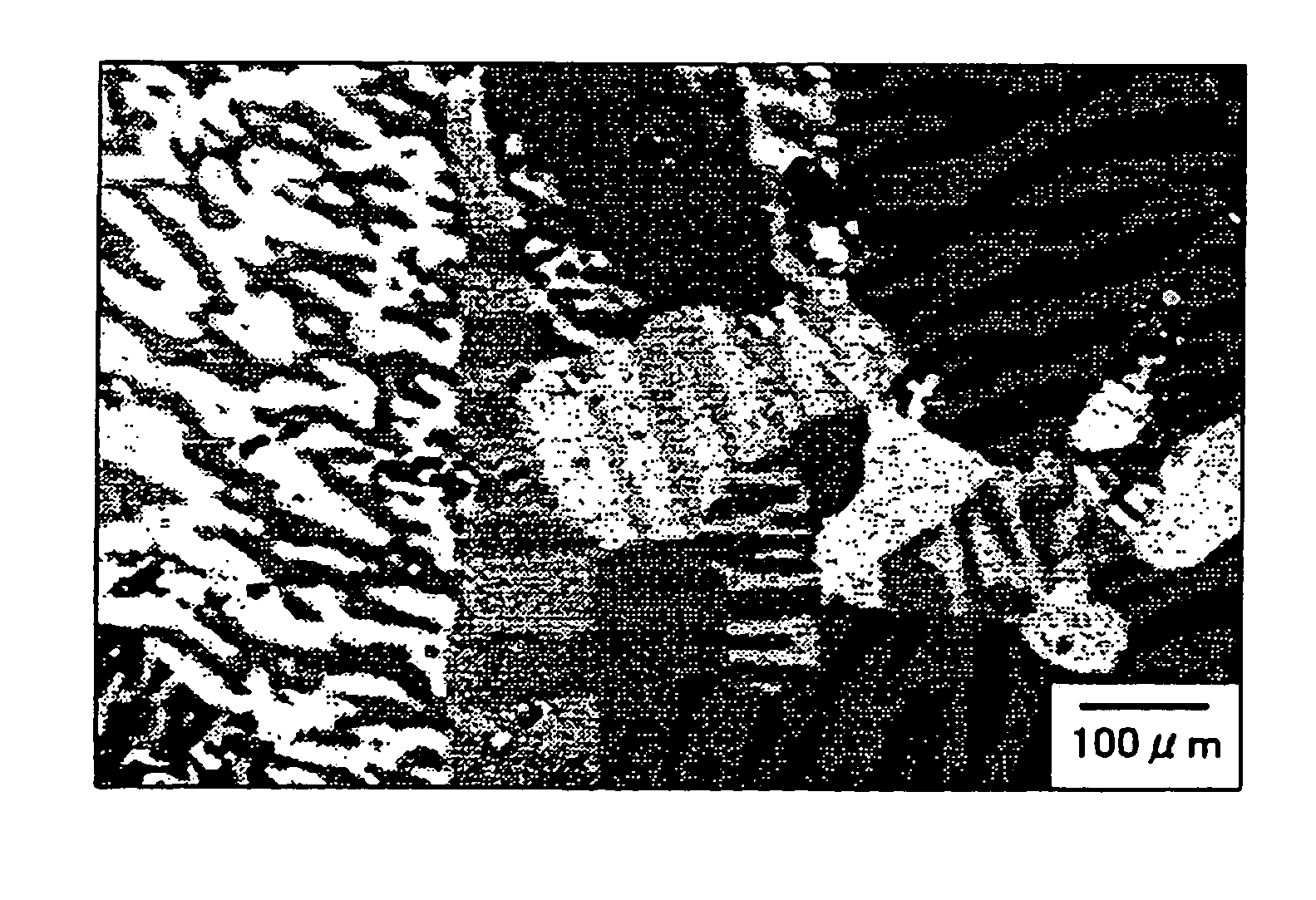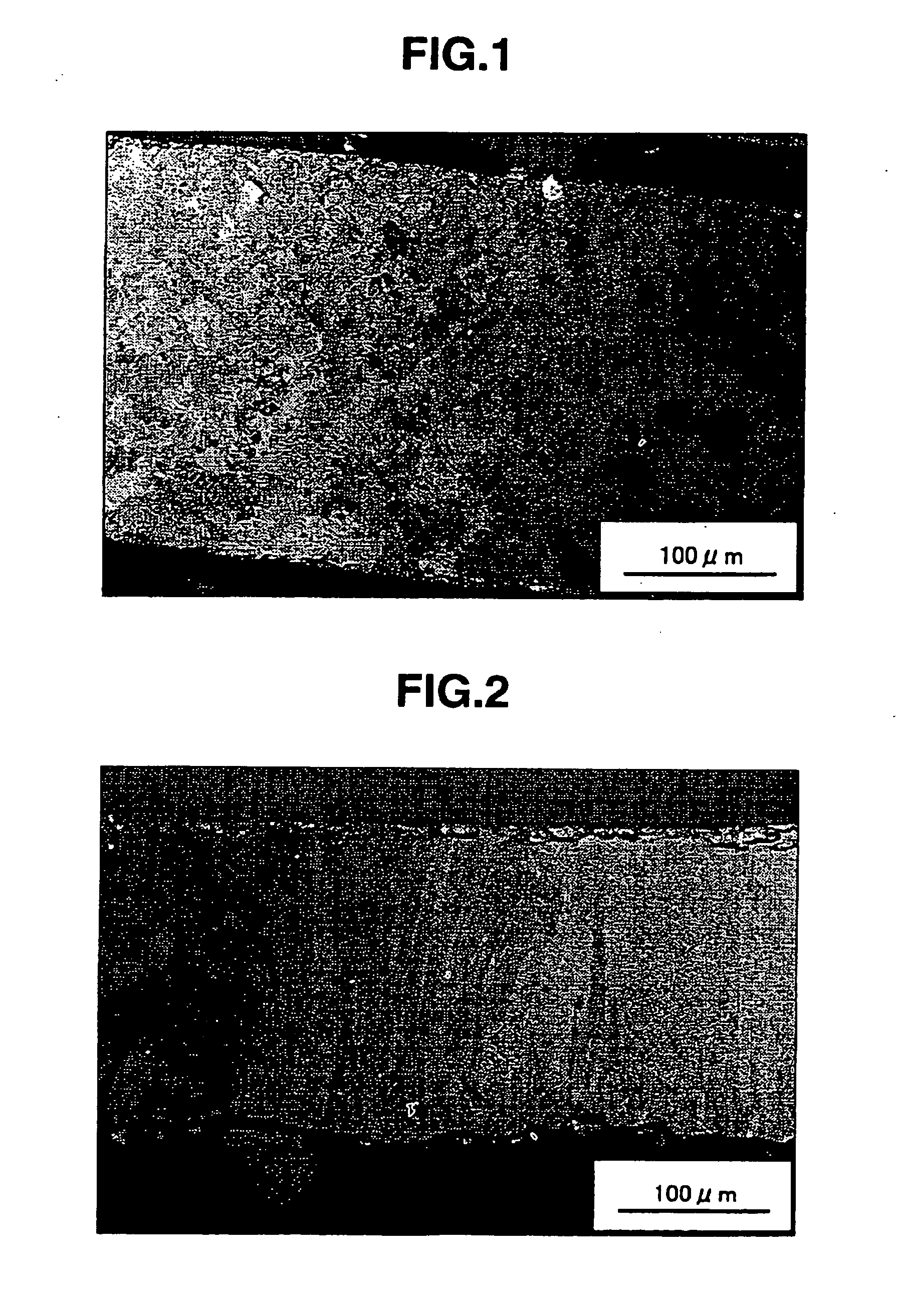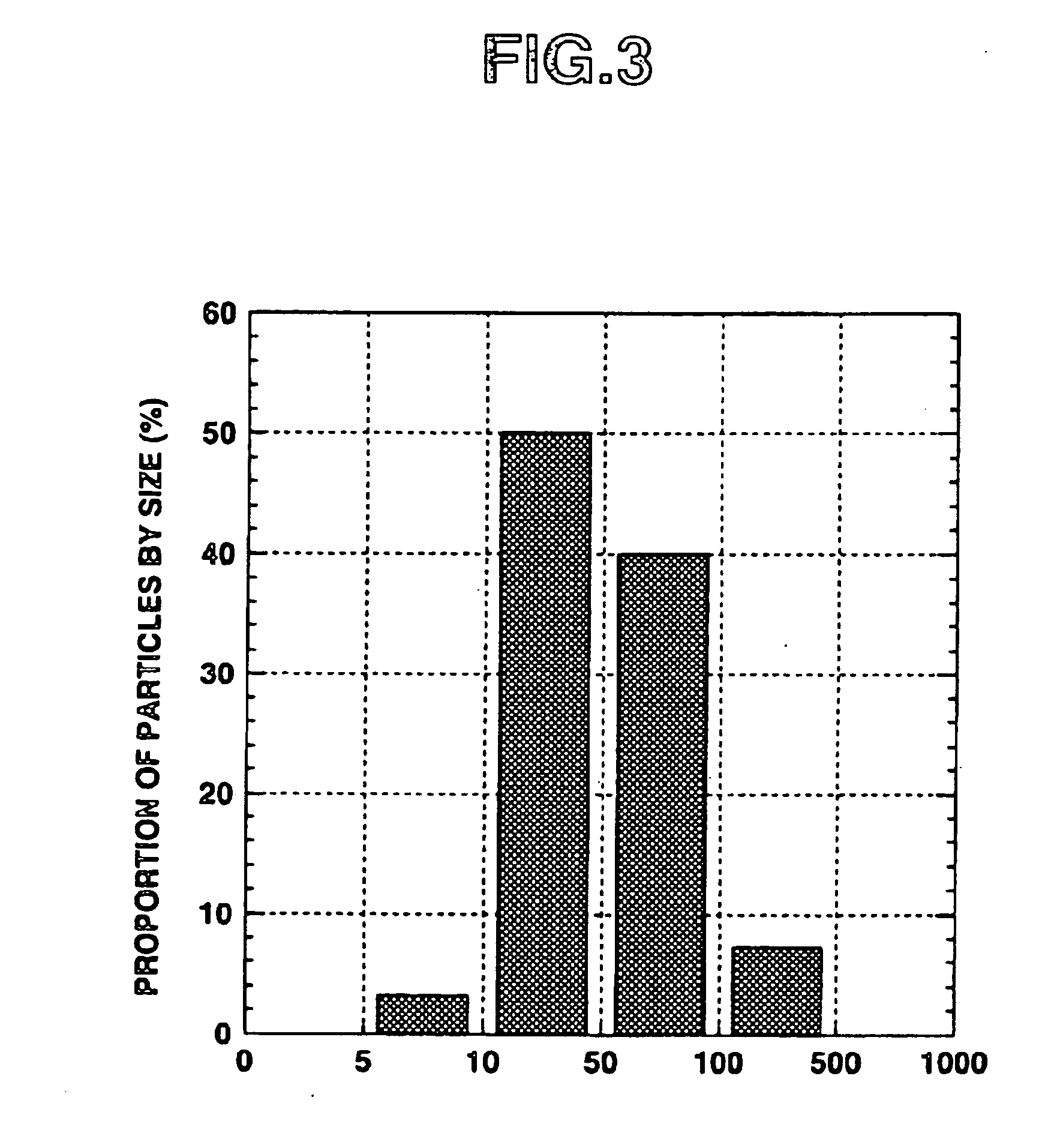Rare-earth alloy, rare-earth sintered magnet, and methods of manufacturing
a technology sintered magnets, applied in the field of rare earth alloys, can solve the problems of reducing production efficiency, difficult to achieve good magnetic properties, and large grain size and the formation of equiaxed crystals, and achieve uniform treatment and short period of time
- Summary
- Abstract
- Description
- Claims
- Application Information
AI Technical Summary
Benefits of technology
Problems solved by technology
Method used
Image
Examples
example 1
[0069] A Sm2Co17-based magnet ingot was produced by formulating a starting material composed of 25.5 wt % samarium, 16.0 wt % iron, 5.0 wt % copper and 3.0 wt % zirconium, with the balance being cobalt. The composition was placed in an alumina crucible and melted in an induction furnace under an argon gas atmosphere, following which the melt was strip-cast using a single water-cooled roll (circumferential speed of roll, 1 m / s) at a melt temperature of 1350° C. FIG. 1 is a polarizing microscope image of the microstructure in the resulting alloy. The alloy had a plate thickness of 0.3 mm and an average crystal grain size of 10 μm. Equiaxed crystals having a grain size of 1 to 200 μm accounted for 95 vol % of the crystals, with the remainder being columnar crystals. “Average crystal grain size”, as used here and below, refers to the average size of the crystal grains expressed as the diameter of a sphere of the same volume.
[0070] The Sm2Co17-based magnet ingot was then heat-treated in...
example 2
[0076] A Sm2Co17-based magnet ingot was produced by formulating a starting material composed of 20.0 wt % samarium, 5.5 wt % cerium, 14.0 wt % iron, 5.0 wt % copper and 3.0 wt % zirconium, with the balance being cobalt. The composition was placed in an alumina crucible and melted in an induction furnace under an argon gas atmosphere, following which the melt was strip-cast using a single water-cooled roll (circumferential speed of roll, 2.5 m / s) at a melt temperature of 1400° C. The alloy had a plate thickness of 0.2 mm and an average crystal grain size of 30 μm. Equiaxed crystals having a grain size of 1 to 200 μm accounted for 80 vol % of the crystals, with the remainder being columnar crystals.
[0077] The Sm2Co17-based magnet ingot was then heat-treated in a heat treatment furnace under an argon atmosphere at 1100° C. for 2 hours. Following the completion of heat treatment, the ingot was quenched. The size of the crystal grains in the resulting Sm2Co17-based magnet alloy was meas...
examples 3 and 4
[0085] In each example, a Sm2Co17-based magnet ingot was produced by formulating a starting material composed of 25.5 wt % samarium, 14.0 wt % iron, 4.5 wt % copper and 2.8 wt % zirconium, with the balance being cobalt. The composition was placed in an alumina crucible and melted in an induction furnace under an argon gas atmosphere, following which the melt was strip-cast using a single water-cooled roll (circumferential speed of roll, 1 m / s) at a cooling rate of −2000° C. / s. The resulting Sm2Co17-based magnet ingot was heat-treated in a heat treatment furnace under an argon atmosphere at 1200° C. for 2 hours. Following the completion of heat treatment, the ingot was quenched. The structures of the resulting Sm2Co17-based magnet alloys were examined under a polarizing microscope and a scanning electron microscope, in addition to which the average crystal grain sizes were measured.
[0086] The Sm2Co17-based magnet alloys were crushed to a size of about 500 μm or less with a jaw crush...
PUM
| Property | Measurement | Unit |
|---|---|---|
| crystal grain size | aaaaa | aaaaa |
| particle size | aaaaa | aaaaa |
| temperature | aaaaa | aaaaa |
Abstract
Description
Claims
Application Information
 Login to View More
Login to View More - R&D
- Intellectual Property
- Life Sciences
- Materials
- Tech Scout
- Unparalleled Data Quality
- Higher Quality Content
- 60% Fewer Hallucinations
Browse by: Latest US Patents, China's latest patents, Technical Efficacy Thesaurus, Application Domain, Technology Topic, Popular Technical Reports.
© 2025 PatSnap. All rights reserved.Legal|Privacy policy|Modern Slavery Act Transparency Statement|Sitemap|About US| Contact US: help@patsnap.com



